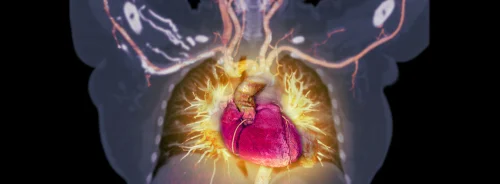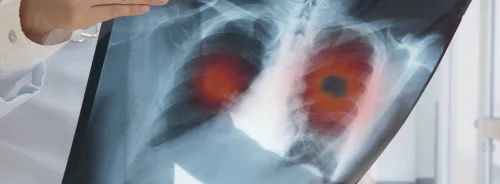Lung cancer remains the leading cause of cancer-related mortality globally, claiming approximately 2 million lives in 2020. Early detection of malignant lung nodules (LNs) significantly improves survival rates, as these can often be treated effectively if caught early. With incidental lung nodules appearing in 30-50% of all chest CT scans, the accurate identification and classification of these nodules are crucial. However, the increasing workload on radiologists and the inherent challenges in nodule detection pose significant hurdles. This article examines the role of a commercial Computer-Aided Detection (CAD) system in enhancing lung nodule detection and characterisation, highlighting its potential benefits and limitations.
The Challenge of Lung Nodule Detection
Detecting lung nodules on CT scans is a complex task that can be hindered by various factors, including the size of the nodules, their location, and the radiologist's experience. Sensitivity rates for detecting lung nodules by individual radiologists vary from 65% to 85%, with double reading improving detection rates to 70-95%. However, double reading is not commonly practised due to time constraints and the need for more resources. This gap has led to the development of CAD systems designed to assist radiologists by serving as a second reader, thereby potentially increasing the detection rate of actionable nodules.
The Role of CAD Systems in Lung Nodule Detection
CAD systems use advanced algorithms to identify potential lung nodules on CT scans, thereby serving as a valuable second reader. These systems have demonstrated promising diagnostic performance in internal studies, with reported detection sensitivities ranging between 82% and 95%. However, a critical aspect of these systems is external validation—testing the system on independent datasets to ensure reliability and generalizability. Unfortunately, only 6% of CAD algorithms undergo such external validation, raising concerns about their clinical efficacy. The study discussed here focuses on externally validating a commercial AI-based CAD system, specifically designed to detect and classify solid, part-solid, and ground-glass nodules.
Study Methodology and Findings
The study involved 263 chest CT scans, categorised into nodule-containing and non-nodule-containing groups based on radiology reports and subsequent review by experienced radiologists. The CAD system, named qCT, was evaluated for its ability to detect and characterise nodules, comparing its performance to that of human radiologists. The CAD system demonstrated an overall detection sensitivity of 81.4%, slightly lower than the radiologists' 90.2%. It showed particular strengths in identifying nodules in lower lung regions and detecting small nodules, areas where radiologists might be more likely to miss nodules.
The CAD system's characterisation capabilities, which include determining nodule texture, calcification, and spiculation, were also assessed. While the system showed high accuracy in detecting calcification (91.9%) and spiculation (82.6%), its performance in characterising nodule texture, especially in distinguishing ground-glass and part-solid nodules, was less robust. The system's sensitivity for ground-glass nodules was particularly low, indicating a significant area for improvement.
The evaluated CAD system shows potential as a supportive tool in lung nodule detection and characterisation, particularly as a second reader to enhance radiologists' accuracy. While its detection capabilities are on par with other commercial systems, the study highlights the need for improvement in texture characterisation, especially for more complex nodule types like ground-glass nodules. Despite these challenges, integrating CAD systems in clinical practice could optimise workflow, reduce the likelihood of missed diagnoses, and support radiologists in making more informed decisions.
Future research should focus on comparing radiologist performance with and without CAD support to determine the system's true value in clinical settings. Additionally, assessing the cost-effectiveness of CAD systems and exploring their broader implications on healthcare delivery will be crucial in determining their role in future lung cancer screening and diagnosis protocols. Ultimately, while CAD systems cannot replace the nuanced judgment of experienced radiologists, they offer a promising adjunct tool to enhance the accuracy and efficiency of lung cancer detection.
Source Credit: European Radiology
Image Credit: iStock






